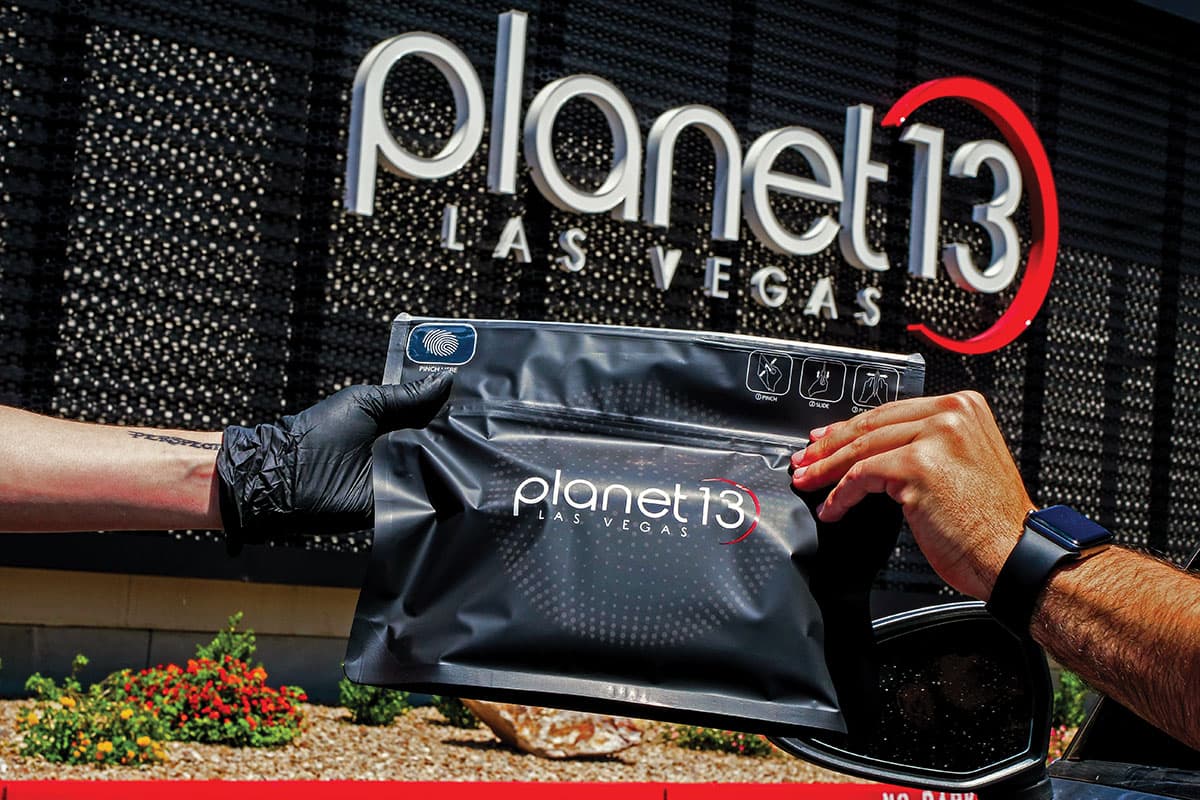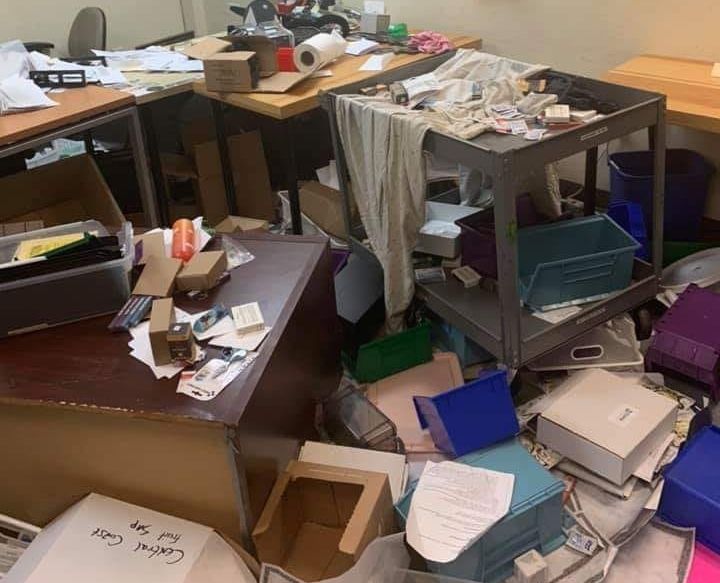(This story appears in the November-December issue of Marijuana Business Magazine.)
This spring, the coronavirus pandemic turned the traditional retail model on its head—and marijuana retailers and dispensaries were no exception.
Across North America, public-health guidelines prompted retail stores to offer online preordering to be fulfilled via in-store pickup, curbside pickup or home delivery. For many marijuana retailers, the rapid shift meant upgrading existing preorder programs or rushing to create new operating procedures from scratch.
Cannabis retailers interviewed by Marijuana Business Magazine say a well-designed preordering system can bring rewards, including:
- An opportunity to capture new clients in search of pandemic-friendly shopping experiences.
- Boosting sales of certain products that might have been overlooked previously.
- A new way to manage customer queues in busy markets.
Achieving those goals requires rethinking customer service and paying extra attention to ensure a seamless experience for shoppers of all technological comfort levels.
Implementing processes in Las Vegas
Planet 13 in Las Vegas already had an in-house delivery and order-pickup system in place when COVID-19 reached the United States earlier this year.
“We saw a huge spike in our online orders, and we had to convert a massive part of our team to the delivery department,” said David Farris, Planet 13’s vice president of sales and marketing.
Farris said the spike in preorders demonstrated the importance of rethinking customer service when shoppers aren’t interacting face-to-face with store staff. In addition to offering customer service by phone, Planet 13 added a chat feature on its website, letting shoppers consult the customer-service team in real time as they browsed the retailer’s lengthy menu.
“We wanted to make sure there was somebody they could talk to—or ask questions, if needed—at all times, at any hour of the day,” Farris said.
A trained budtender verifies each order with the customer before it goes out for delivery. If a shopper’s first choice isn’t available, budtenders suggest similar items to substitute.
Farris said it took a week or two for Planet 13 to nail down accurate delivery times at the start of the pandemic. If deliveries were late, Planet 13 offered customers a free pack of gummies for their trouble.
“We always try to take care of people,” he said.
While Planet 13’s pre-pandemic clientele was largely tourists, the retailer’s pivot to preordering might have helped it win the long-term business of locals.
“We grabbed a much larger percentage of market share among the local customers because of the services that we provided,” Farris said.
Going remote in Vermont
At Champlain Valley Dispensary’s four medical marijuana outlets in Vermont, the proportion of online preorders increased to roughly 65% from pre-pandemic levels of about 20%-25%, according to John Sikes, assistant director of retail operations at the dispensary.
At this magazine’s press time, the remaining 35% of orders were processed by phone, as the dispensary was closed to in-store shopping to protect staff and patients. Sikes said Champlain Valley added a new customer-service associate and allocated more staff to phone lines to help process phone orders and conduct initial consultations.
“It’s actually working really well with patients,” he said of the preordering system. “Patients appreciate the precautions.”
Sikes said that posting menus online gives patients an opportunity to consider new products, which has boosted sales of some items that previously went overlooked, such as teas, coffees and transdermal patches.
“Now that they’re scrolling through the menus, most of those products are selling a lot better,” he said.
Sikes said he expects preorders will continue to play a large role in the dispensary’s business even after the coronavirus subsides and customers can shop in stores again.
“A lot of these people are homebound,” he said of the dispensary’s clientele. “They love coming in and seeing us, but at the same time, I think the majority of the patient base is going to opt into the online ordering feature. They can see everything that’s available, they can place (an order), they can come in, they can still have conversation, but it’s just a quick and easy pickup.”
Starting from scratch in Canada
In Ontario, Canada’s largest adult-use marijuana market, private-sector cannabis retailers such as Ottawa-based Superette faced a bind when their stores were suddenly deemed nonessential and ordered to shut down in early April.
A subsequent emergency order allowed marijuana stores to temporarily offer curbside pickup and home delivery for the first time, leaving Superette co-founder and CEO Mimi Lam and her competitors scrambling to build preorder infrastructure.
Like Planet 13’s Farris and Champlain Valley Dispensary’s Sikes, Lam said walking customers through the new preorder system was critical to its adoption.
“Being patient and really understanding what those customers want—and what their pain points are—(is) really important,” she said.
Lam’s best advice to other retailers looking to implement preorders is to make sure the process works seamlessly before launching, guaranteeing customers get their expectations met during their very first preorder experience.
“(The) last thing you would want is for someone to have one bad interaction with your brand or with your store and then … (they) go to someone else,” she said. “It has to be a seamless experience, end-to-end, for it to be a successful launch.”
As of press time, Ontario retailers such as Superette can no longer offer home delivery or curbside pickup, although preorders for in-store pickups are still permitted.
“Some customers are still not comfortable … going in-store,” said Lam, who’s optimistic that Ontario’s government might tweak its regulations to permit home delivery from private-sector operators yet again.
Taking reservations in Illinois
PharmaCann’s four Verilife retail outlets in Illinois offered preorders even before the COVID-19 pandemic to help address long lines that were common after the state legalized adult-use marijuana on Jan. 1.
Verilife’s system allows shoppers to simultaneously reserve the products they want and choose a time slot for pickup.
“You can view our menu, make your selections, and those selections will be there for you for 48 hours,” PharmaCann Chief Growth Officer Bill McMenamy told Marijuana Business Magazine.
“We’ve removed the urgency to run to the store and get in line, so that way, you have a shot at getting the product that you really covet,” he said.
McMenamy said the reservation system helps Verilife manage customer throughput in light of social-distancing regulations, while also diminishing outdoor lines that caused friction with the stores’ local communities. He said certain customers appreciate convenient, quick transactions that respect their time, but the system also leaves room for staff to spend more time with customers who need to ask questions.
Verilife says its Illinois customers must pay for marijuana purchases on-site, in line with state regulations. But McMenamy said the situation actually benefits the stores, because customers can add items to their orders at the point of sale.
“Someone builds a basket (online), and they might have three or four items in there. But when they arrive in-store, there might be one item that they forgot to put in their basket,” he said.
Overall, McMenamy describes online preorders as a growing retail trend that’s been accelerated by the pandemic.
“Any business that’s going to be competitive—and not just in this COVID environment but competitive post-COVID—really needs to embrace technology,” he said. “You have to meet the customer where they are—and where they are … is on their handheld device. You really need to embrace and evolve with the customer.”





